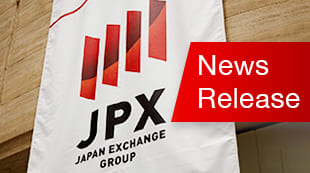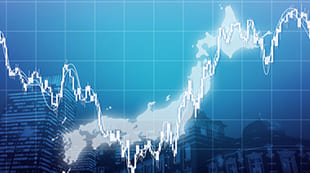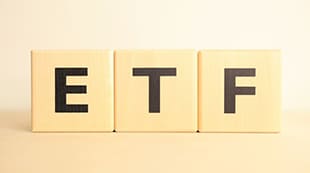Search results 851-860 / 10638
- sort:
- relevance
- latest

Listed Issues (CB) | Japan Exchange Group No such issues currently. Delisted Issues...

Listing (CB) | Japan Exchange Group Initial Listing Listing Supervision Delisting Criteria for Listing Examination Delisting Criteria Delisting date The criteria for listing examination of convertible bonds are as follows. The issuer is a listed company Total nominal amount is JPY 2 billion or more The conditions of exercise of subscription warrants are not deemed inappropriate We will also notify the Commissioner of the FSA of any new convertible bond (CB) listings. Listing supervision of convertible bonds is largely focused on the exercise of subscription warrants associated with the convertible bonds. When a listed convertible bond is exercised, there will be a decrease in the total listed nominal amount and an increase in the number of listed shares of the underlying stock at the same time. Therefore, TSE receives monthly reports on exercise and changes the total listed nominal amount and the number of listed shares. Issuers also report redemptions, retirement ...

Convertible Bonds | Overview (CB) | Japan Exchange Group Convertible Bonds Characteristics Convertible Bonds Price of CBs (Parity and Deviation rate) Risk Convertible bonds are bonds that can be converted to shares at the conversion price. In other words, the holders of convertible bonds can get the stock of the company of the issuer of convertible bonds at the conversion price*. The conversion price is the price per share to be issued upon conversion. For example, if you convert JPY 1 million worth of convertible bonds at the conversion price of JPY 10,000, you will obtain 100 shares. The conversion price is usually determined before issuance, however, some convertible bonds may have clauses that allow adjustments to the conversion price within a certain period after issuance. Convertible bonds can be converted to stock at the conversion price. Therefore, in general, when the stock price rises, you can expect to benefit from ...

Trading (CB) | Japan Exchange Group Convertible Bonds (CBs) are traded on arrowhead system. Trading Hours 9:00 am - 11:30 am 12:30 pm - 3:30 pm Trading Unit JPY 100 thousand, JPY 500 thousand, JPY 1 million, JPY 2 million, JPY 3 million, JPY 4 million, or JPY 5 million in par value (depends on issue) Tick Size JPY 0.05 per JPY 100 in par value Types of Orders Limit orders and market orders Daily Price Limit Product of the price limit of underlying stock and conversion ratio (Minimum JPY 5) Trade Execution Individual auctions for each issue (same as stocks) Conditional orders On open and IOC are available (On close and funari are not available) Types of Trading and Settlement Dates Cash transactions (T+0) Regular transactios (T+3) Settlement Account transfer on JASDEC (Note) ・ToSTNeT trading is also available....

Listed Issues (Infrastructure Funds) | Japan Exchange Group Listed Issues (Infrastructure Funds) You can view stock price information for each company by clicking the code. Listing Date Issue Name Code (ISIN Code) Accounting Dates Outline Report on Management Systems of Fund Issuer, etc. Status of Asset Management Management Company Offering Price (JPY) Feb. 20, 2020 Japan Infrastructure Fund Investment Corporation 9287 (JP3049000007) End of May End of Nov. - - - Japan Infrastructure Fund Advisors Ltd. - Feb. 13, 2019 Enex Infrastructure Investment Corporation 9286 (JP3048820009) End of May End of Nov. - - - Enex Asset Management Co.,Ltd - Sep. 27, 2018 Tokyo Infrastructure Energy Investment Corporation 9285 (JP3048780005) End of Jun. End of Dec. - - - Tokyo Infrastructure Asset Management Co., Ltd. - Oct. 30, 2017 Canadian Solar Infrastructure Fund,Inc. 9284 (JP3048590008) End of Jun. End of Dec. - - - Canadian Solar Asset Management K.K. - Dec. 01, 2016 Ichigo Green Infrastructure Investment Corporation 9282 (JP3048360006) End of Jun. - - - Ichigo ...

Overview (Infrastructure Funds) | Japan Exchange Group Infrastructure Fund Market Structure of infrastructure funds Tokyo Stock Exchange (TSE) established an infrastructure fund market on April 30, 2015 for listing funds that invest in infrastructure assets including renewable energy facilities, power grids, and transport and transmission networks. In recent years, due to a combination of a harsh fiscal climate and an urgent need for maintenance and repair of existing infrastructure and new construction projects, there are increasing calls to tap into private sector funds and know-how for infrastructure development and management. In addition, infrastructure investments are viewed as a stable asset class that is not easily affected by economic trends and drawing interest as a means to safely diversify investment portfolios. Considering the social significance of infrastructure development and the increasing demand for infrastructure investments, TSE developed the necessary rules and launched the infrastructure fund market to address the needs for ...

Overview | Azuki (Red Bean) Futures | Japan Exchange Group About Azuki (Red Bean) Futures Overview Contract Specifications Red beans (Azuki) are generally grown in warm and humid climates and considered to be vulnerable to cold and drought, but they can also be grown in mountainous areas and newly cultivated lands. In addition, crop rotation in a cycle of 3 to 4 years is recommended for red beans since they are not suitable for continuous cropping. Thus, Hokkaido, blessed with vast land, is ideal for the production red beans, as well as other beans. In Hokkaido, red beans were grown primarily in the Matsumae region, but as the cultivation progressed, the production area gradually expanded to the center of Hokkaido and to the Tokachi region. This contributed to the increase in the acreage and brought the shift from self-sufficient production to production as commodities. The weather conditions during the growing and ...

Overview | Corn Futures | Japan Exchange Group About Corn Futures Overview Contract Specifications Almost all corn consumed in Japan is imported from foreign countries, mainly from the US. About 70% of the corn is consumed as feed and the rest is consumed as food. As for feed, 80% is used as raw material for compound feed for pigs, dairy cows, beef cattle, and poultry. As for food,70% is processed into corn starch used for saccharification of glucose, starch syrup and isomerized sugar, or fiber, paper paste, and other food ingredients. The remaining 30% is processed into grit which is used as fermentation raw material for distilled liquor and beer. It is also used as a raw material for confectioneries such as corn flakes and popcorn, or miso. Corn prices are heavily influenced by the yield from the Corn Belt, a major production area in the US. Attention must be paid ...

Overview | Soybean Futures | Japan Exchange Group About Soybean Futures Overview Contract Specifications Soybeans have been cultivated from the ancient time in Japan. Japan has long history of processing soybeans to consume as food, and it is said that the popularization of tea ceremony kaiseki during the Momoyama era triggered the spread of soybeans to ordinary people. At present, soybean-based miso, natto, soy sauce, and tofu, etc. are indispensable to our dietary habits. It can be said that the wisdom of the Japanese ancestors has contributed to today’s Japanese cuisine. Soy is often called "meat of the field", because it is highly nutritious, containing proteins, fats, carbohydrates, ash, minerals, and vitamins. Soy is essential food for the structure and function of human body cells and in recent years, as the importance of vegetable protein has been recognized, soybean foods have attracted attention worldwide. Soybean prices are heavily influenced by ...

Overview | DJIA Futures | Japan Exchange Group About DJIA Futures Overview Contract Specifications DJIA Futures are futures contracts based on Dow Jones Industrial AverageSM, which is a modified stock average index of 30 issues selected by CME Group Index Services LLC ("CME Indexes"), and is calculated by the CME Indexes. Note regarding Trading DJIA Futures are based on the same underlying index as the DJIA futures traded on the Board of Trade of the City of Chicago, Inc. (CBOT). However, since the base currency for the futures is different, the two contracts are not necessarily traded at the same price. Copyrights/Disclaimer Copyrights/Disclaimer Related Site Dow Jones Averages...














